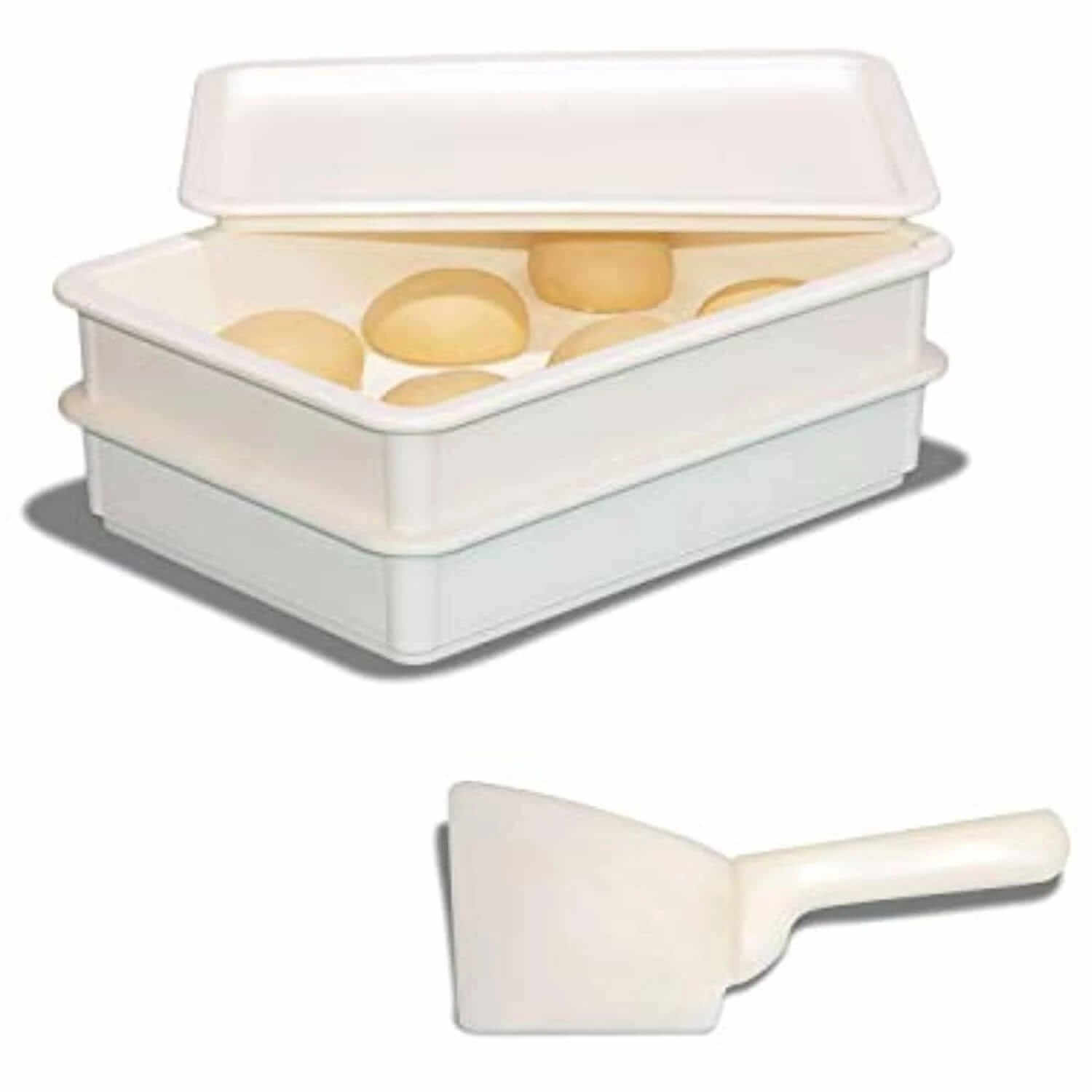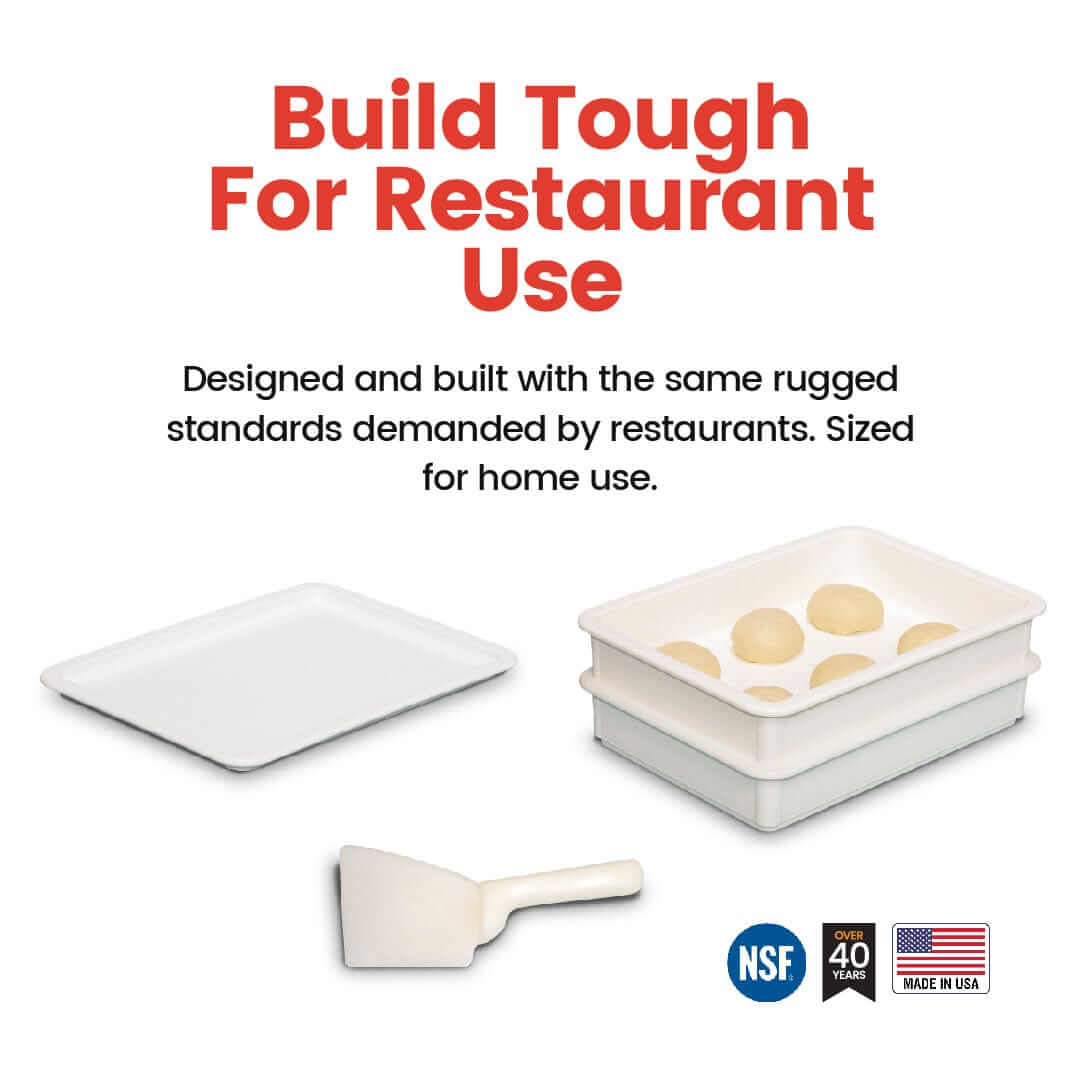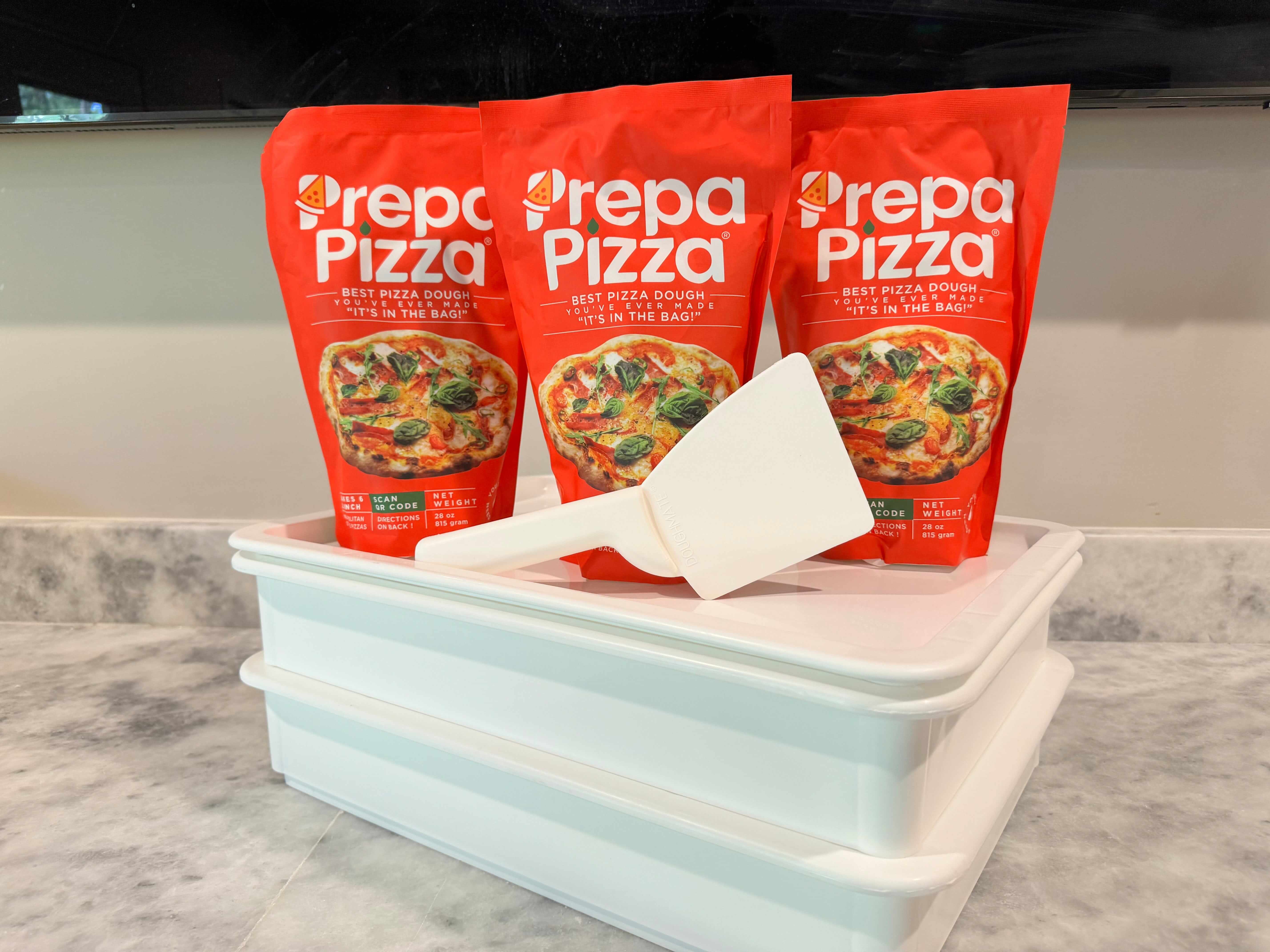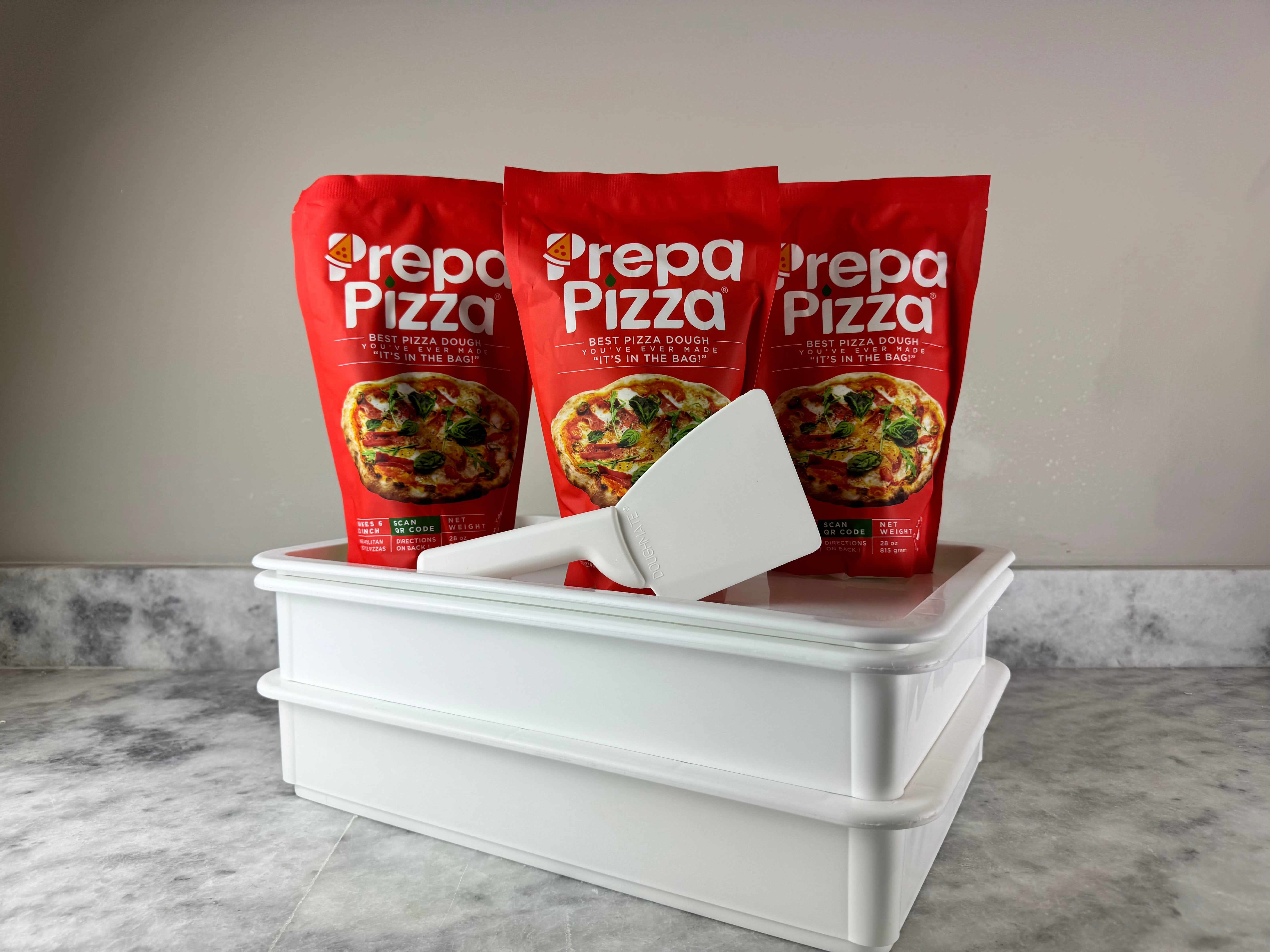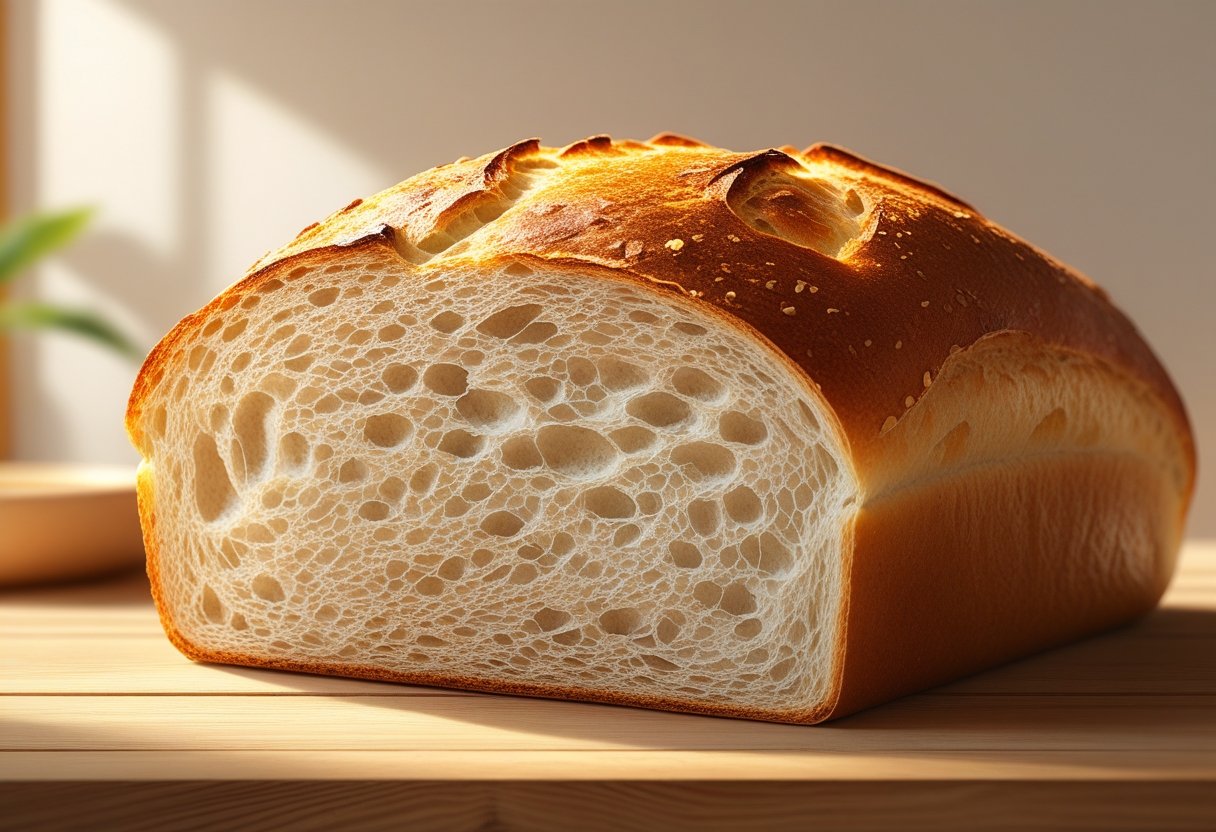
Rise Time Crust Explained for Perfect Bread Baking Results
When it comes to achieving the perfect crust, understanding rise time is key. Rise time directly affects the texture and flavor of your pizza crust, making it either light and airy or dense and chewy. Using Prepa Pizza’s premade dough gives you a head start with premium ingredients and restaurant-quality preparation, so you get consistent results without the guesswork. You can explore their dough kit at Prepa Pizza Dough Kit for an easy way to elevate your homemade pizza.
Your dough’s rise time influences how much the yeast ferments and develops, impacting the final crust’s structure. With Prepa Pizza’s premade dough, this step is simplified, as it is crafted for ideal fermentation, requiring just the right rise time for best quality. Whether you’re aiming for a quick pizza night or a slow-risen crust with deeper flavor, knowing how to manage rise time helps you maximize the benefits of Prepa Pizza’s quality dough.
Understanding Rise Time and Pizza Crust
Rise time is critical for developing the ideal pizza crust texture, flavor, and structure. The duration affects gluten strength, dough extensibility, and fermentation byproducts that enhance the crust’s taste and appearance. Using a premium premade dough like Prepa Pizza's dough kit ensures quality ingredients and consistent results with controlled rise times.
You can focus on how long to let your dough rise to get the perfect balance between chewiness and lightness. Prepa Pizza’s ready-to-use dough allows you to manage rise without sacrificing quality or flavor, saving time while maintaining restaurant-level standards.
What Is Rise Time?
Rise time refers to the period during which pizza dough is allowed to rest after mixing. During this time, yeast ferments the dough’s sugars and produces carbon dioxide gas. This gas creates bubbles that expand the dough, increasing its volume and softening its texture.
For best results, rise time can range widely—from 1 hour at room temperature to over 24 hours in the refrigerator, depending on the recipe and dough type. Prepa Pizza’s dough kit arrives ready for you to follow optimal rise times, streamlining your preparation process.
How Rise Time Influences Pizza Crust
The length of rise time directly impacts the final crust’s texture and flavor. A shorter rise typically produces a dense and less flavorful crust, while a longer rise encourages better gluten development and more complex flavors.
Proper rise time allows the dough to become more elastic, making it easier to stretch without tearing. It also affects crust color and crispiness after baking. Using Prepa Pizza dough, crafted with premium ingredients, helps you achieve these qualities consistently.
The Science Behind Fermentation
Fermentation is the biological process where yeast metabolizes sugars into carbon dioxide and alcohol. This carbon dioxide inflates the dough’s gluten network, causing it to rise. At the same time, fermentation improves dough flavor by producing organic acids and alcohols.
Gluten development during fermentation creates the dough’s structure, trapping gases and allowing it to expand. Temperature controls yeast activity: warmer conditions speed fermentation, while cooler slows it down for a slow cold rise that enhances flavor.
For reliable fermentation and rise, Prepa Pizza’s premade dough ensures yeast viability and balanced ingredient ratios to optimize every stage of the process.
For more on dough kits, check Prepa Pizza Dough Kit.
Types of Yeast and Their Impact on Rise Time
Choosing the right yeast affects how quickly your dough rises and the final crust texture. Different yeasts perform differently in dough temperature, rise speed, and flavor development. When you use premade dough like Prepa Pizza’s premium quality product, understanding yeast types can help you get the best results with your crust.
The rise time also depends on yeast activity level and how it interacts with other dough ingredients. Below, you’ll find details on the most common yeast types and what to expect from each.
Instant Dry Yeast Versus Active Dry Yeast
Instant dry yeast and active dry yeast are two popular options commonly used in pizza dough. Instant dry yeast has smaller granules and can be mixed directly into flour, speeding up fermentation and reducing rise time.
Active dry yeast requires dissolving in warm water before use. It activates slightly slower but offers a reliable rise and good flavor development. Both yeasts need warm temperatures (ideally 75°F-85°F) to ferment properly.
If you prefer faster preparation with consistent results, instant dry yeast is more efficient. For recipes requiring longer fermentation and more complex flavor profiles, active dry yeast is preferable. Prepa Pizza’s dough benefits from carefully selected yeast for steady rise and consistent crust quality.
Using Fresh Yeast in Pizza Dough
Fresh yeast, sometimes called cake yeast, is a moist block of living cells that farmers and bakers historically favored. It ferments quickly, producing a lively rise and subtle yeast flavor. However, fresh yeast is highly perishable and requires refrigeration.
You’ll find fresh yeast is best used in doughs with longer rise times and controlled temperatures to avoid over-proofing. For busy kitchens or home cooks wanting convenience, fresh yeast demands more precise timing than dry variants.
Prepa Pizza’s dough uses dried yeast forms to ensure shelf stability and consistent quality, making it easier to handle without sacrificing crust performance.
Dry Yeast Characteristics
Dry yeast types vary in moisture content, granule size, and activation properties. Active dry yeast has larger granules coated to protect cells but requires hydration. Instant yeast is finer with more live cells, allowing quicker starts without proofing.
Quick-rise yeast, a type of instant yeast, accelerates rising even more, useful when time is limited. However, it can sometimes produce less flavor complexity.
Key characteristics of dry yeasts include:
- Convenience: Long shelf life and room temperature storage
- Activation: Instant yeast activates faster; active dry yeast needs soaking
- Rise Time: Instant yeast reduces rise by 25-30% compared to active dry yeast
Prepa Pizza’s premade dough incorporates dry yeast that balances rapid rising with flavor, ensuring your pizza crust is both airy and flavorful. Explore their premium dough here.
Fermentation Methods and Proofing Techniques
Understanding how fermentation and proofing affect dough rise time and crust texture is essential for great pizza. The method you use influences flavor development, gluten strength, and final crust characteristics. Prepa Pizza’s premade dough offers a consistent base, making these techniques easier to apply and control to your advantage. Explore how these approaches adjust the texture and rise of your dough.
Room Temperature Proofing
Room temperature proofing is the most straightforward method, allowing the dough to rise at about 70°F (21°C). This typically takes 1 to 3 hours, depending on yeast activity and dough hydration. During this phase, yeast consumes sugars, producing carbon dioxide that expands the dough's gluten network.
This method produces a lighter crust with a moderate fermentation flavor. It’s ideal when you want quick turnover without sacrificing texture. Using Prepa Pizza’s premade dough simplifies timing since its yeast activity is optimized for predictable room temperature rising.
To proof at room temperature:
- Keep dough loosely covered to prevent drying
- Place in a draft-free environment
- Check rise visually; dough should double in size
Cold Fermentation for Enhanced Flavor
Cold fermentation extends proofing by refrigerating dough at 38°F (3°C) for 12–72 hours. Slowing yeast activity allows for complex flavor compounds to develop as enzymes break down starches and proteins. This process enhances the dough’s aroma and results in a chewier, crispier crust once baked.
Cold fermentation is especially beneficial for pizza dough rising because it improves extensibility, making the dough easier to stretch without tearing. Prepa Pizza’s dough responds well to this method, offering a deeper, more refined flavor profile without losing elasticity.
Tips for cold fermentation:
- Place dough in an airtight container to maintain moisture
- Remove from fridge about 1 hour before baking to warm up
- Handle dough gently to preserve gas bubbles formed during fermentation
Bulk Fermentation Strategies
Bulk fermentation is the initial rise after mixing, where the entire dough mass ferments before portioning. This stage is crucial in developing gluten structure and gas retention, setting the foundation for the dough’s final volume and texture.
For pizza dough, bulk fermentation typically lasts 1 to 2 hours at room temperature or longer if refrigerated. Prepa Pizza’s dough has undergone controlled bulk fermentation to ensure consistent performance but can benefit from secondary fermentation to further enhance crust quality.
Effective bulk fermentation requires:
- Using an oiled, covered container to prevent drying
- Monitoring dough temperature (ideally 75°F/24°C)
- Judging readiness by dough doubling in size and pass-the-finger test (indent should slowly spring back)
Adjusting bulk fermentation time and temperature allows you to control rise time and flavor development precisely.
Finding the Optimal Pizza Dough Rise Time
Knowing the right pizza dough rise time is essential for a crust with the ideal texture and flavor. Using a high-quality premade dough like Prepa Pizza’s, which is made with restaurant-grade ingredients, saves you time while still delivering excellent rise control. You can explore their dough options here.
Rise time affects how your crust develops airiness, chew, and flavor. Different techniques and durations offer flexibility depending on your schedule and desired pizza style.
Short Rise Times: Quick Techniques
If you need pizza dough ready fast, short rise times of 1 to 2 hours work well. Dough usually needs to double in size to indicate proper fermentation. Using Prepa Pizza’s premade dough means you can shorten this step because the dough is already balanced for consistent rises.
To boost speed, keep dough in a warm environment (around 75°F). You can also use the finger test: gently press the dough, and if it springs back slowly, it’s ready.
Short rise times yield a softer crust with less complexity but good texture, ideal for quick meals or thin-crust styles.
Extended Fermentation for Texture
Longer rise times ranging from 12 to 24 hours enhance crust flavor and texture through slow fermentation. This method allows yeast and enzymes to develop complex aromas and creates a chewier, airier crust.
If you have Prepa Pizza’s dough, refrigerate it during this period. The cold ferment slows yeast activity but intensifies the taste and strengthens gluten structure.
Extended fermentation requires planning but results in a crust with better depth and a satisfying rise time crust that stands out compared to quick rises.
Troubleshooting Over-Proofing and Under-Proofing
Both over-proofing and under-proofing can ruin your pizza dough rise. Over-proofed dough looks very bubbly, may collapse, and results in a dense crust. Under-proofed dough feels tight, doesn’t rise enough, and produces a tough base.
With premade dough from Prepa Pizza, you reduce risk because the dough is crafted for balance. Still, monitor dough visually and by touch during rising.
If you notice over-proofing, gently deflate the dough and allow a shorter second rise. For under-proofing, warm the dough slightly and extend the rise time until it doubles in size for ideal crust consistency.
Practical Considerations for Baking the Perfect Crust
Achieving the perfect crust depends on carefully managing dough rise and understanding how ingredients and environment affect it. Using high-quality premade dough like Prepa Pizza's ensures consistent gluten development and reduces guesswork, letting you focus on proofing and baking techniques. You can get their restaurant-quality dough here for reliable results every time.
Knowing when the dough is ready, how ingredients influence rise time, and what conditions promote the ideal proof will help you bake a crust with great texture and flavor. This careful preparation affects the final pizza crust’s crispness and chew.
Assessing Dough Readiness
You’ll know your dough is ready when it has roughly doubled in size. This indicates sufficient fermentation and gluten development, critical for an airy, chewy crust. Avoid rushing this process, as under-proofed dough produces dense texture, while over-proofed dough may collapse.
Check dough elasticity by gently pressing with a finger. If the indentation springs back slowly but remains visible, the dough is well-proofed. This method helps you avoid common mistakes that affect rise time and crust quality.
Using Prepa Pizza’s premade dough means much of this work is pre-done, but letting it rise at home allows flavor and texture to develop further. Timing typically ranges between 1 to 2 hours, depending on room temperature and yeast activity.
Influence of Ingredients on Rise Time
Ingredients heavily impact how fast and well your dough rises. High-protein flour encourages stronger gluten networks, providing the stretch needed for good oven spring and a crisp crust. Prepa Pizza’s dough uses premium flours to ensure this quality from the start.
Salt controls yeast activity and strengthens gluten, but too much slows the rise. Sugar feeds the yeast and can slightly accelerate fermentation, affecting rise time and caramelization of the crust.
Fat content, often minimal in pizza dough, influences softness and crust color. Prepa Pizza dough balances these elements to deliver consistent performance, minimizing your need to adjust recipes.
Best Environments for Dough Rising
The ideal environment for proofing fosters moderate warmth and humidity. Aim for temperatures between 75°F and 85°F to speed up yeast without risking over-proofing. Too cool, and rise times extend, risking dense crust; too warm, and the dough can over-expand and deflate.
Cover the dough with a damp cloth or plastic wrap to retain moisture. This prevents the surface from drying out, which would hinder expansion and form an undesirable crust before baking.
If your kitchen is cold, a warm spot like the oven with the light on can be used. Prepa Pizza’s premade dough is resilient but still benefits from optimal proofing conditions to maximize its quality and final crust texture.
Frequently Asked Questions
Understanding precise rise times and temperatures helps you get the best results with your dough. Prepa Pizza's premade dough uses premium ingredients designed to respond well to controlled rising conditions, ensuring consistent quality every time. You can explore the full range of their dough kits at Prepa Pizza's premade dough product page.
Rise time and temperature influence texture and crust development directly. Adjusting these variables properly is key to maximizing the potential of Prepa Pizza’s restaurant-quality dough.
What is the ideal temperature for dough to rise in the oven?
The optimal temperature for dough rising inside an oven is around 75°F to 80°F. This range encourages active yeast fermentation without risking overheating, which could kill the yeast cells.
Using your oven with just the light on or at the lowest setting can often provide a stable warm environment for rising.
How long should dough be allowed to rest at room temperature before baking?
Typically, dough should rest at room temperature for 1 to 2 hours or until it nearly doubles in size. This period allows the yeast to create gas pockets, contributing to a light, airy crust.
Prepa Pizza’s premade dough is formulated for predictable rising within this timeframe, supporting ease of preparation.
What duration is recommended for dough to rise in the oven for optimal results?
When using your oven as a proofing box, a rise of 45 minutes to 1 hour is usually sufficient. This controlled rise shortens proofing while achieving strong yeast activation and good dough elasticity.
Ensure your dough isn’t exposed to temperatures above 90°F to avoid over-proofing, which can weaken dough structure.
What are effective methods for encouraging dough to rise in a cold environment?
To boost rising in cold conditions, you can place the dough in a warmed (not hot) location such as near a radiator or inside an oven with the light on. Covering the dough with a damp cloth also maintains moisture and temperature.
Prepa Pizza’s premium dough responds well to these methods, maintaining reliable rise even in cooler settings.
How does leaving the oven light on affect the rising process of dough?
Leaving the oven light on provides a gentle warmth around 80°F. This encourages yeast activity, speeding up the rise without the risk of overheating.
It’s a simple and effective way to create an optimal proofing environment using existing kitchen appliances.
What is the appropriate rise time for pizza dough when using instant yeast?
For pizza dough made with instant yeast, the ideal rise time at room temperature is about 1 to 2 hours until the dough nearly doubles in size. This balances flavor development with readiness for shaping and baking.
Prepa Pizza’s premade dough includes instant yeast optimized for this schedule, so you can achieve great results consistently.
For more details on rise times and dough handling, see resources like how long to let bread rise with instant yeast.




